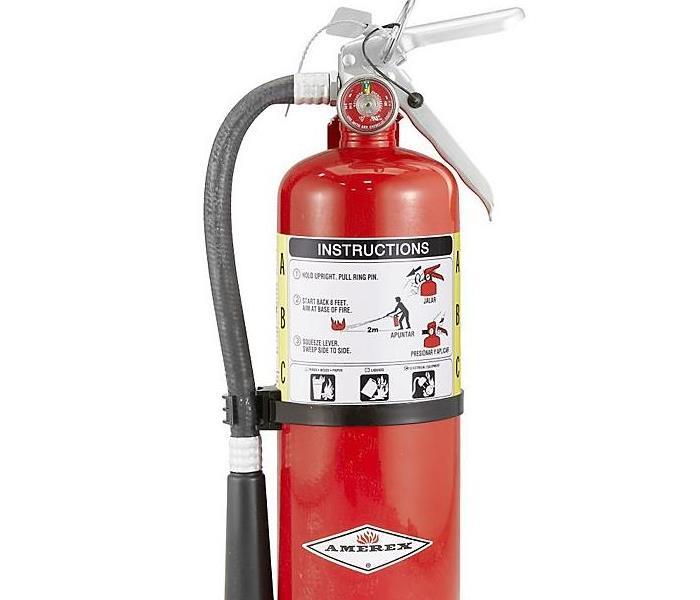FIRE EXTINGUISHERS - NEED TO KNOW FACTS
3/27/2019 (Permalink)
Whether you are a home owner or renter, knowing the basic tenants of fire safety can mean the difference between minor damage or total loss. Having a fire extinguisher on the premises and knowing how to access it can keep you and your loved ones safe. Here we will review the different types of fire extinguishers and how to use one in the event of an emergency.
Fire Extinguisher Classifications
Household fire extinguishers are labeled with a specific class to fight a specific type of fire. Since using the wrong extinguisher could make the situation worse, consider one that is rated for multiple classes.
Class A: For trash, wood, and/or paper fires.
Class B: For liquids and/or grease fires.
Class C: For electrical fires.
Class D: For flammable metals (usually only needed in labs or industrial plants).
Class K: Specifically for kitchen fires when grease and oil are involved.
Fire Extinguisher Effectiveness and Size
When choosing an extinguisher, determine its effectiveness by considering the numbers on the label. Every number before the A means it is as effective as 1.25 gallons of water. For example, 2A means the fire extinguisher is as effective as 2.5 gallons of water. The numbers before B and C are a measure of the amount of square feet the fire extinguisher can put out. For example, a 20: BC fire extinguisher can extinguish a fire over 20 square feet.
Keep in mind that the extinguisher size also varies based on the weight. Typically, there are 4, 5, 10, and 20-pound extinguishers. Bigger isn’t always better; it depends how much you can physically hold and the size of your residence.
How to Use a Fire Extinguisher
A good way to remember what to do in a moment of panic is the acronym P.A.S.S.
Step 1: Pull the pin.
Step 2: Aim the extinguisher at the fire low with the nozzle at the base of the fire.
Step 3: Squeeze the handle to begin extinguishing the fire.
Step 4: Sweep the extinguisher side to side at the fire’s base until it’s out.
With these helpful tips, we hope that you remain prepared in the event of a fire. Don’t hesitate to call 9-11 if the fire spreads or if you are in need of assistance. We are here to help during the aftermath to repair damage caused by smoke, soot, and fire; call us 24/7 for all your restoration needs.






 24/7 Emergency Service
24/7 Emergency Service
